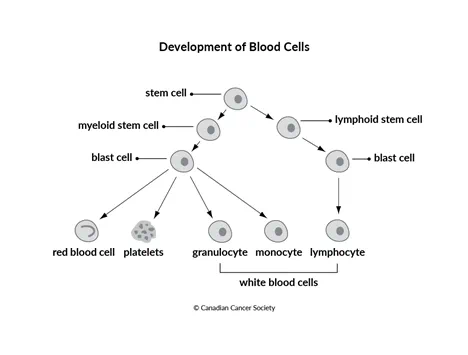What is chronic lymphocytic leukemia?
Chronic lymphocytic leukemia (CLL) is a cancer that starts in blood stem cells. Stem cells are basic cells that develop into different types of cells that have different jobs. As the stem cells of the blood develop, they become blast cells (blasts), which are immature blood cells. In leukemia, there is an overproduction of blast cells. These blast cells develop abnormally and don’t develop into mature blood cells. Over time, the blast cells crowd out normal blood cells so that they can’t do their jobs. When leukemia is diagnosed, these blast cells may be called leukemia cells.
There are many different types of leukemia. They are grouped based on the type of blood stem cell they developed from. Blood stem cells develop into either lymphoid stem cells or myeloid stem cells.
Lymphocytic leukemias (also known as lymphoblastic leukemias) develop from abnormal
lymphoid stem cells. Lymphoid stem cells normally develop into lymphocytes, a type
of white blood cell. Lymphocytes are found in blood and different parts of the

The types of leukemia are further grouped based on how quickly the leukemia develops and grows. Acute leukemias start suddenly, developing within days or weeks. Chronic leukemias develop slowly over months or years.
CLL starts in abnormal lymphoid stem cells and usually develops slowly over months or years. In 95% of cases of CLL, the abnormal lymphoid stem cells develop into cancerous, or malignant, B lymphocytes. CLL is one of the most common types of leukemia in adults. It is very rare in children.
CLL is very similar to a type of
The blood and bone marrow
Your trusted source for accurate cancer information
With support from readers like you, we can continue to provide the highest quality cancer information for over 100 types of cancer.
We’re here to ensure easy access to accurate cancer information for you and the millions of people who visit this website every year. But we can’t do it alone.
Every donation helps fund reliable cancer information, compassionate support services and the most promising research. Please give today because every contribution counts. Thank you.
